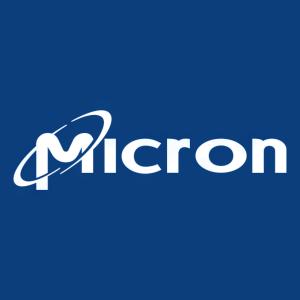Micron Delivers Client NVMe™ Performance and Value SSDs With Industry-Leading Capacity Sizes and QLC NAND
Micron Technology (Nasdaq: MU) has launched two new solid-state drives (SSDs): the Micron 2300 and Micron 2210. The Micron 2300 SSD features a 2TB capacity and is optimized for high-performance applications, achieving up to 3,300 MB/s read speeds. The Micron 2210 SSD utilizes quad-level-cell (QLC) NAND, offering significant power savings, making it ideal for cost-sensitive consumers. Both SSDs support advanced security features and are built on Micron's 96-layer 3D NAND technology, catering to the increasing demand for NVMe SSDs in client computing.
- Launch of Micron 2300 SSD with 2TB capacity for high-performance applications.
- Micron 2210 SSD offers significant power savings of up to 15 times compared to hard drives.
- Both products utilize innovative 96-layer 3D NAND technology.
- Enhanced security with TCG Opal 2.0 and TCG Pyrite 2.0 support.
- None.
Insights
Analyzing...
News Highlights
- New mainstream and value SSD options provide flexibility to address client PC systems ranging from thin and light notebooks to high-performance workstations.
- Micron 2300 SSD’s M.2 form factor delivers industry-leading 2TB capacity1 using Micron’s innovative 96-layer 3D NAND technology.
- Designed with SSD performance and value in mind, the Micron 2210 SSD uses Micron’s QLC architecture to reduce power consumption up to 15 times when compared to hard drives.
BOISE, Idaho, May 12, 2020 (GLOBE NEWSWIRE) -- Micron Technology, Inc. (Nasdaq: MU), today announced new client solid-state drives (SSDs) that bring NVMe™ performance to client computing applications, freeing laptops, workstations and other portables from legacy architectures that can rob devices of battery power, performance and productivity. The Micron® 2300 SSD combines the power and density needed to drive compute-heavy applications in a compact form factor with the reduced power consumption modern mobile users demand. For the first time, Micron brings together NVMe performance and low-cost quad-level-cell (QLC) NAND in the Micron® 2210 QLC SSD. It combines fast NVMe throughput and Micron’s leadership in QLC technology to offer flash capabilities at hard disk drive-like price points while reducing power consumption by 15 times when compared to hard drives.2
“Ninety percent of client platforms will ship NVMe SSDs within the next year, and the market is fast bifurcating into mainstream and value market segments," said Roger Peene, vice president of marketing, Storage Business Unit, Micron. "Our two new client SSDs, the 2300 and 2210, are optimized for each segment. The 2300 offers outstanding power performance, while the 2210 delivers compelling price performance by using Micron's industry-leading QLC NAND.”
Both SSDs introduced today are built on Micron’s innovative 96-layer 3D NAND technology to deliver power savings, right-sized capacity and compact form factors that enable flexible designs.3 They also deliver enhanced client security features and capabilities for protecting data, with TCG Opal 2.0 and TCG Pyrite 2.0 support.
Micron 2300 Solid-State Drive with NVMe
The Micron 2300 SSD is designed for applications that demand high performance and industry-leading capacities in the popular M.2 form factor. Features include the ability to:
- Maximize for data-intensive workloads encompassing CAD, graphical design and video editing for faster application load times and responsiveness.
- Offer a wide range of capacity points, from 256GB up to 2TB.
- Fit a broad set of desktop and mobile design needs with a small, dense, M.2 form factor (22x80).
- Achieve up to 3,300 MB/s sequential reads and up to 2,700 MB/s sequential writes.
Micron 2210 QLC SSD with NVMe
The Micron 2210 SSD bridges the gap between the low cost of hard disk drives and the performance, reliability, low power and security of SSDs. It uses high-density, cost-efficient QLC architecture that Micron first brought to the data center. Features include the ability to:
- Improve application load times and responsiveness with fast NVMe making it ideal for performance-sensitive applications where hard disk drives can’t keep up.
- Offer a wide range of capacity points from 512GB up to 2TB in the M.2 (22x80) form factor.
- Provide a cache with greater write endurance and performance with innovative dynamic write acceleration that is optimized for QLC architecture.
- Achieve up to 2,200 MB/s sequential reads and up to 1,800 MB/s sequential writes.
Both products are available now. To learn more, visit https://www.micron.com/client-ssd.
Resources
- Micron Storage: https://www.micron.com/products/solid-state-drives
- Twitter: https://www.twitter.com/MicronTech
- LinkedIn: https://www.linkedin.com/company/micron-technology/
- YouTube™: http://www.youtube.com/user/MicronTechnology
About Micron Technology, Inc.
We are an industry leader in innovative memory and storage solutions. Through our global brands – Micron® and Crucial® – our broad portfolio of high-performance memory and storage technologies, including DRAM, NAND, 3D XPoint™ memory and NOR, is transforming how the world uses information to enrich life. Backed by more than 40 years of technology leadership, our memory and storage solutions enable disruptive trends, including artificial intelligence, 5G, machine learning and autonomous vehicles, in key market segments like mobile, data center, client, consumer, industrial, graphics, automotive, and networking. Our common stock is traded on the Nasdaq under the MU symbol. To learn more about Micron Technology, Inc., visit micron.com.
1 Industry-leading capacity when compared to comparable 22x80 single-sided M.2 SSDs
2 Versus comparable capacity mobile hard disk drives
3 Micron 2300 SSD in the 256GB capacity uses 64-layer 3D NAND.
© 2020 Micron Technology, Inc. All rights reserved. Micron, the Micron logo, and Intelligence Accelerated are trademarks of Micron Technology, Inc. All other trademarks are the property of their respective owners.
Micron Media Relations Contact David Oro Micron Technology, Inc. +1 (707) 558-8585






